FORMATION OF PAUL REVERE LODGE
Paul Revere Masonic Lodge No. 321, Ancient Free & Accepted Masons, began on May 4, 1923, when 11 Masons met at the old fire barn at present-day 36th and Brunswick. The goal was to organize a Masonic Lodge which would benefit the Masons living in the village. It was decided to organize a Masonic Club admitting all Master Masons in good standing who were affiliated with other Lodges. Each member contributed one dollar. Meetings were held from time to time and it was finally decided that all members of the Club would join together in application to the Grand Lodge for a dispensation to form a Masonic Lodge. Each member was to contribute $10 to go into a general fund to defray expenses and purchase necessary paraphernalia.
On August 24, 1923, an application for Dispensation to form a regular Masonic Lodge was signed by 48 Master Masons and forwarded to the Grand Lodge, AF&AM of Minnesota.
At a subsequent meeting a discussion was held about the name for the Lodge. B. William Chell spoke about the patriotic and Masonic achievements of Paul Revere and proposed that his name be taken as the name of our Lodge. It was regularly adopted.
The Dispensation was granted and on September 28, 1923, the first meeting of the Lodge Under Dispensation was held in the Odd Fellows Hall in the Hamilton Building. The first officers of the lodge, U.D., who were appointed by the Grand Master, were Brothers Joseph F. Elias, John K. Seirup, and Edwin H. Renner. The Lodge held 21 meetings while working Under Dispensation.
The charter was issued on January 17, 1924, “by the Most Worshipful Grand Lodge of Ancient Free and Accepted Masons of Minnesota, to whose Constitutions, Regulations, Laws, Rules and Edicts, the most implicit respect and obedience shall ever be paid by this Lodge and its members.”
On February 2, 1924, “our dreams and hopes reached fruition,” and the Grand Lodge of Masons in Minnesota held an Occasional Communication in St. Louis Park for the purpose of constituting Paul Revere Lodge. “It was a gala event and the culmination of almost a year’s efforts of a large group of Masons inspired with a deep sense of responsibility to the Masonic Fraternity.” Joseph F. Elias was the first Worshipful Master, John K. Seirup was the Senior Warden, and Edwin H. Renner was the Junior Warden.
CHARTER MEMBERS
Linthon C. Adams
Earl Ainsworth
John Applequist
Charles E. Bramhall
Frank E. Bronsdon
Louis L. Brown
J.N.W. Buddle
Vernon J. Butterfield
Hugh R. Campbell
William Chell
Earl L. Clark
Frank N. Clark
Chester C. Crellin
Clayton C. Cross
William H. Denson
W.D. Dixon
Fred C. Doyle
William J. Doyle
Charles W. Gibson
George W. Gibson
Edward J. Goff
Glenn Graves
James A. Guy
Charles H. Hamilton
Albert Harper
Charles F. Hemmenway
Robert J. Henderson
R.B. Hodgdon
Albert F. Holmes
William T. Hooper
Erick J. Jensen
Henry R. Jensen
Lawrence M. Jensen
Henry M. Johnson
Irving A. Johnson
Raymond Johnson
Thomas H. Johnson
Edward O. Kornberg
Elmer J. Lang
Vernon Langdon
Verner G. Lindahl
Axex A. Lindquist
Oren S. MacConnell
R.W. Mallory
George A. Meade
George Moseley
Clyde E. Munson
Andrew Nelson
Herman H. Nelson
George D. Noe
Helmus A. Peterson
Edwin H. Renner
Thomas J. Rennix
Charles A. Roberts
Robert E. Scott
Maurice Silverman
Nels M. Sorensen
Peter Stienstra
Charles W. Stratton
E.A. Sykes
C.B. Waddell
John E. Webster
Ole J. Ween
Edward J. Werner
Jacob A. Werner
Carl A. Williams
Zeff E. Wood
James L. Woods
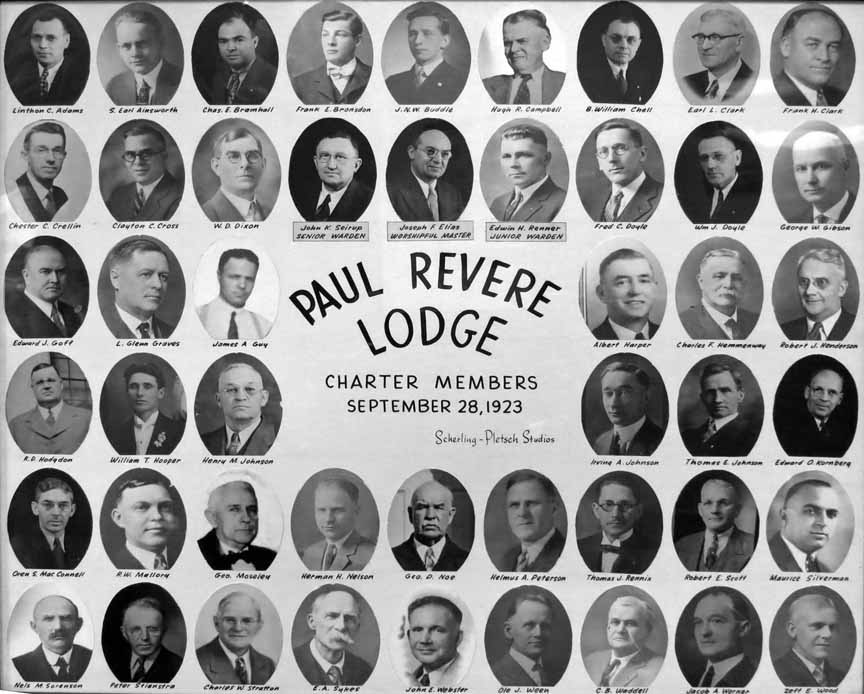
The first official meeting was held on February 8, 1924, with 70 charter members. (Only the 48 listed above appear on the framed display of their photos).
BUILDINGS OLD AND NEW
The group rented the I.O.O.F. (Odd Fellows) meeting hall on the second floor of the Hamilton Building (6509 Walker Street) until 1942 when they bought the entire building from Charles Hamilton’s estate for $5,000.
The Hamilton Building burned down in the evening of December 25, 1958. The building housed storefronts on the first floor and businesses in the basement. One of those basement organizations taught young mothers to care for their children, and one possible cause of the fire was a clothes dryer that was accidentally left on. A photography business in the building may have fueled the 12-hour fire. See a personal account of the devastating fire on the Hamilton Building page.
The Masons immediately resolved to rebuild on the same site, and met in Robbinsdale while the new building was being built. A contract was signed with Volp Construction Co. to build the new facility at a cost of $123,000. St. Louis Park companies Vogt Heating and Air Conditioning and Park Lane Carpets were subcontractors. On April 10, 1960, 100 members and friends attended the Groundbreaking ceremony.
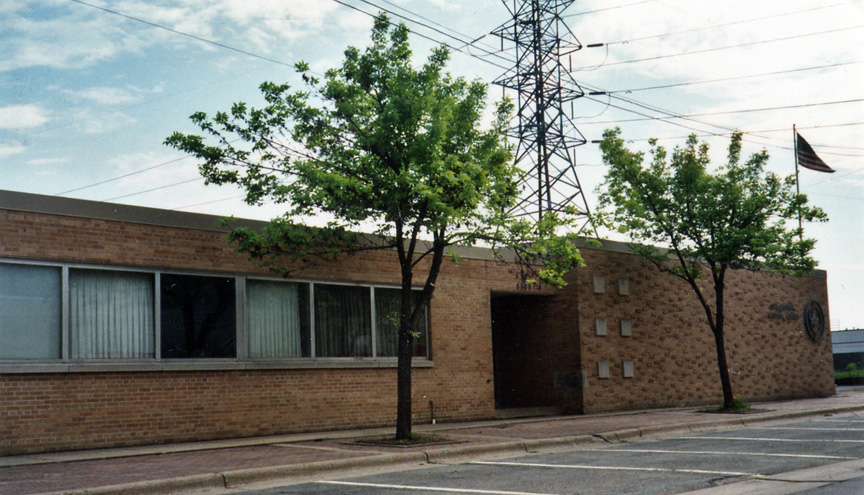
The building was completed and the first meeting held on September 7, 1960. Before the building was completely furnished, member John Billman brought in chairs from his mortuary for meetings. Gifts of furnishings and cash were presented by Acacia, Job’s Daughters, and DeMolay. The cornerstone was laid in a ceremony on October 1, 1960, attended by 300 Masons, friends, and families.
The new building was 106 ft. on the front and extended back 144 ft. The lodge room was 46 by 58 ft. It had a complete kitchen and dining room that could seat 135 people. There was even an old-fashioned phone booth, which was auctioned off in 1985.
The building included a rental area, with its first tenant being the St. Louis Park branch of the Hennepin County Library, starting with a three year lease.
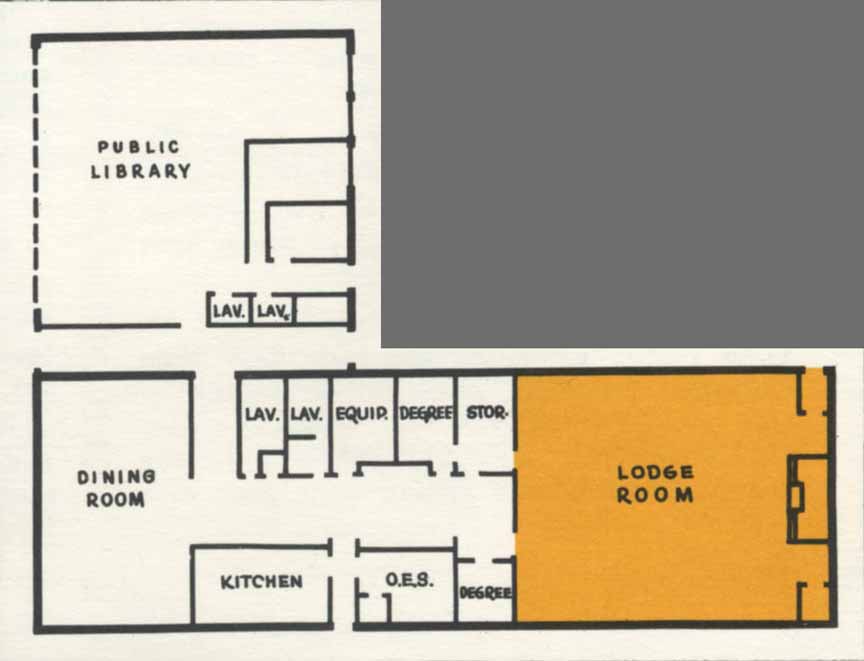
When the building was opened it also hosted twice-monthly meetings of the Odd Fellows and Rebekahs.
On June 27, 1987, the new George Washington Lodge Room was dedicated in the former library space.
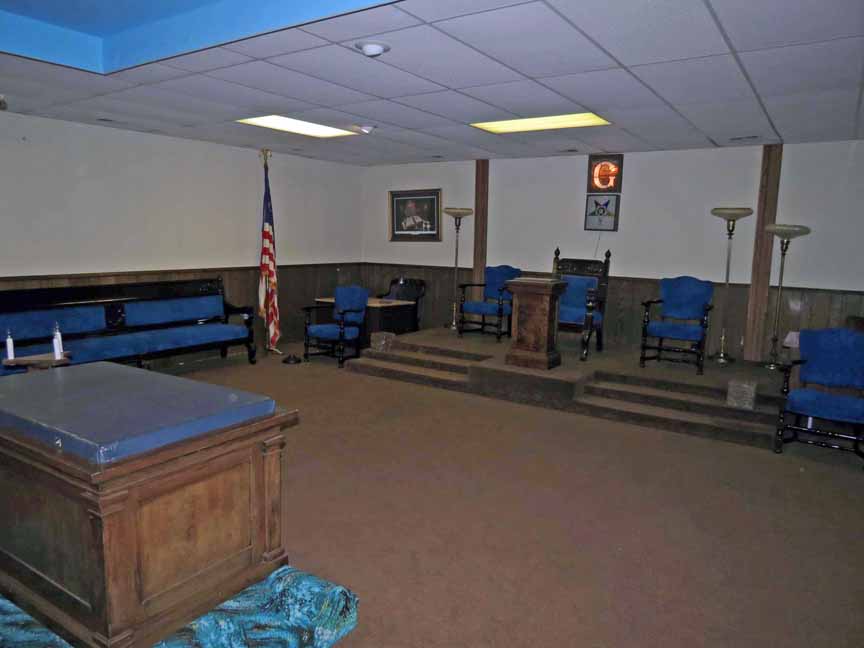
MEMBERSHIP OF THE PAUL REVERE LODGE
1924: 70
1940: 113
1950: 453
1960: 875
1970: 1,018
1980:
1990:
2000:
WORSHIPFUL MASTERS OF PAUL REVERE LODGE
The leaders of the Paul Revere Lodge read like a who’s who of St. Louis Park Village and City history, and include businessmen, public servants, and others who were active in the formation and growth of our city.
| 1924 | Joseph E. Elias |
| 1925 | John K. Seirup |
| 1926 | Edwin H. Renner |
| 1927 | Linthon C. Adams |
| 1928 | B. William Chell |
| 1929 | Charles E. Bramhall |
| 1930 | William J. Doyle |
| 1931 | S. Earle Ainsworth |
| 1932 | Edward O. Kornberg |
| 1933 | Bertram P. Edey |
| 1934 | Carroll L. Hurd |
| 1935 | Floyd W. Brown |
| 1936 | Oren S. MacConnell |
| 1937 | Herman J. Bolmgren |
| 1938 | Lathrop L. Byers |
| 1939 | Milo E. Stevens |
| 1940 | Frank J. Woodfill |
| 1941 | J. Walter Hagen |
| 1942 | Francis E. Edey |
| 1943 | Vernerd C. Anderson |
| 1944 | Sigurd A. Johnson |
| 1945 | Howard W. Perkins |
| 1946 | Oscar E. Erlanson |
| 1947 | Phillip F. Manthey |
| 1948 | Wendell F. Hill |
| 1949 | Axel F. Carlstrom |
| 1950 | William P. Libby |
| 1951 | Harvey P. Warner |
| 1952 | Russell O. Miles |
| 1953 | Charles S. Anthony |
| 1954 | Harry G. Kaess |
| 1955 | Floyd M. Schaeffer |
| 1956 | Edgar C. Magnuson |
| 1957 | Wesley J. Felber |
| 1958 | Virgil C. Hall |
| 1959 | Fred D. Lowry |
| 1960 | John E. Magnuson |
| 1961 | Clyde A. Sorensen |
| 1962 | Herbert P. Lefler |
| 1963 | John A. Billman |
| 1964 | George A. Lankki |
| 1965 | Robert E. Larson |
| 1966 | Roy N. Magnuson |
| 1967 | Roy N. Magnuson |
| 1968 | Paul Serber |
| 1969 | Henry H. Feikema |
| 1970 | Robert L. Thomas |
| 1971 | Lyle W. Hanks |
| 1972 | Robert T. Close |
| 1973 | Kenneth H. Anderson |
| 1974 | Jacob Serber |
| 1975 | Thomas L. Newhouse |
| 1976 | Howard E. Johnson |
| 1977 | Bruce C. Humphrey |
| 1978 | Edward C. Behringer |
| 1979 | Herman O. Sogard |
| 1980 | Ronald B. Butte |
| 1981 | Richard M. Hyllested |
| 1982 | Dennis A. Uglum |
| 1983 | Paul Klym |
| 1984 | Greg B. Bogenschutz |
| 1985 | Jerome S. Bloch |
| 1986 | Larry F. Drinkwitz |
| 1987 | Glenn D. Moore |
| 1988 | Robert L. Johnson |
| 1989 | |
| 1990 | |
| 1991 | |
| 1992 | |
| 1993 | |
| 1994 | |
| 1995 | |
| 1996 | |
| 1997 | |
| 1998 | |
| 1999 | |
| 2000 | |
| 2001 | |
| 2002 | |
| 2003 | |
| 2004 | |
| 2005 | |
| 2006 | |
| 2007 | |
| 2008 | |
| TEMPLAR LODGE | |
| 2009 | |
| 2010 | |
| 2011 | |
| 2012 | |
| 2013 | |
| 2014 |
MERGERS
As with many organizations, membership in Masonic lodges began to dwindle and the lodges began to merge.
- ARK LODGE No. 176
Ark Lodge No. 176 moved to the Paul Revere building from the Lake Harriet Lodge at 4519 France Ave. in 1982. In 2013 artifacts from this very old Lodge were on display at the Paul Revere building.
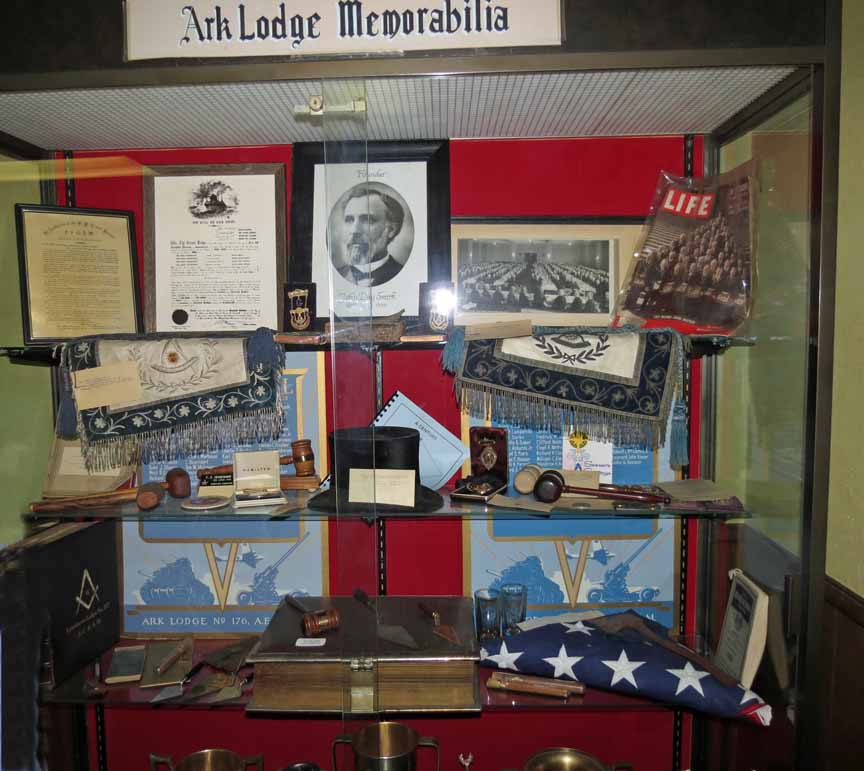
- LYNNHURST LODGE No. 317
Lynnhurst was chartered in the 1920s in South Minneapolis with many members of the Ark Lodge as charter members. It was originally located near 48th and Bryant before they sold their building and wandered for a few years. They were meeting in Hopkins at the time they merged into Templar Lodge.
- TEMPLAR LODGE No. 176
Templar Lodge was chartered on December 16, 2007, as a result of the merger of the Ark and Lynnhurst Lodges. Ark’s number, 176, was used for the new Templar Lodge because it was the oldest of the two charters.
Paul Revere Lodge merged into Templar Lodge on December 1, 2009.
OTHER LODGES MEETING AT THE PAUL REVERE LODGE BUILDING
In 1986 there were several lodges located at 1940 Hennepin Ave. in Minneapolis. Paul Revere Lodge’s Minute Man newsletter reported that there was a movement to consolidate them in the Paul Revere building. Those lodges were:
Hennepin Lodge No. 4 was originally chartered in Minneapolis on 1/2/1854. They met in a building on Franklin and Hennepin in Minneapolis, where the Burch Pizza and Steakhouse is now located. It moved to the Paul Revere building in the 1980s.
Minneapolis Lodge No. 19 met in a building on Franklin and Hennepin in Minneapolis, where the Burch Pizza and Steakhouse is now located. They moved to the Paul Revere building in the 1980s.
Hennepin Lodge No. 4 merged into Minneapolis Lodge No. 19 on November 30, 1999.
Joppa Lodge No. 300 was chartered in 1921, originally located at 1600 West Lake Street in Minneapolis, or very close to that address, until they moved into the building on Franklin and Hennepin, perhaps that address was 1933 Colfax Avenue South. The lodge moved to the Paul Revere building in the 1980s.
Sunlight Lodge No. 323. There is a document expressing interest in renting the Paul Revere building dated September 1969.
Khurum Lodge No. 112 moved to the Paul Revere building in the 1980s. Sunlight and Khurum were merged on October 1, 1991, resulting in Khurum-Sunlight Lodge No. 112, which still meets at 6509 Walker Street.
Phoenix Daylight Lodge No. 350 is a relatively new lodge. It was granted a dispensation from the Grand Lodge of Minnesota with 25 members and received its Charter from the Grand Lodge on April 8, 2005. Phoenix Daylight Lodge began its existence in St. Louis Park primarily because of its central location in the Minneapolis area and because of the ease of having no stairs to navigate. Masons attend from Minneapolis and the Western suburbs. There is also a Daylight Lodge located in the East Metro in Roseville. The St. Louis Park Lodge supports the SLP Emergency Program (STEP) and has contributed many thousands of dollars to the organization for nearly ten years. The Lodge also gets matching funds for STEP from Minnesota Masonic Charities when they donate.
Phoenix Daylight Lodge caters to elderly Masons and its membership has an average age of over 80. Its Mission Statement explains:
Phoenix Daylight Lodge No. 350 provides an alternative experience for those who are unable to or find it difficult to drive after dark or cannot navigate stairs or just want to attend lodge during daylight. All regular Masons who are members of another lodge are welcome to attend our Stated Communications as a guest. We do not solicit membership in our lodge from other lodges but would welcome any who wish to join.
Past Masters of Phoenix Lodge:
| 2004-05 | MWB Donald M. Severson |
| 2005-06 | WB Sam M. Kvasnik |
| 2006-07 | WB John H. McBride |
| 2008 | WB John H. Fossum |
| 2009 | WB John D. Cawhorn |
| 2010 | WB John H. Lindgren |
| 2011 | WB Ronald L. Nelson |
| 2012 | WB Merle S. Mark |
| 2013 | WB Edwin A. Martini |
| 2014 | WB Richard S. McGinnis |
ASSOCIATED ORGANIZATIONS
EASTERN STAR, ACACIA CHAPTER NO. 272 – Click the link to read much more about this active group.
OES Jobs Daughters Bethel No. 41 – This very active organization for girls aged 13 to 21 started in October 1947.
DeMolay – This organization seemed to be not as active, and by the mid-1980s it was called Franklin-Park DeMolay, perhaps indicating that it had merged with another DeMolay chapter.
